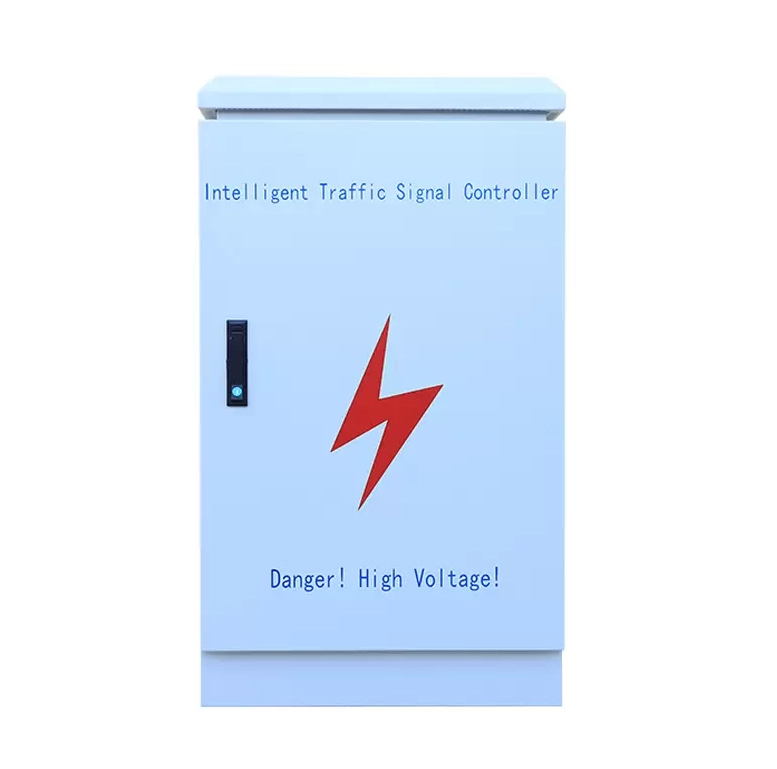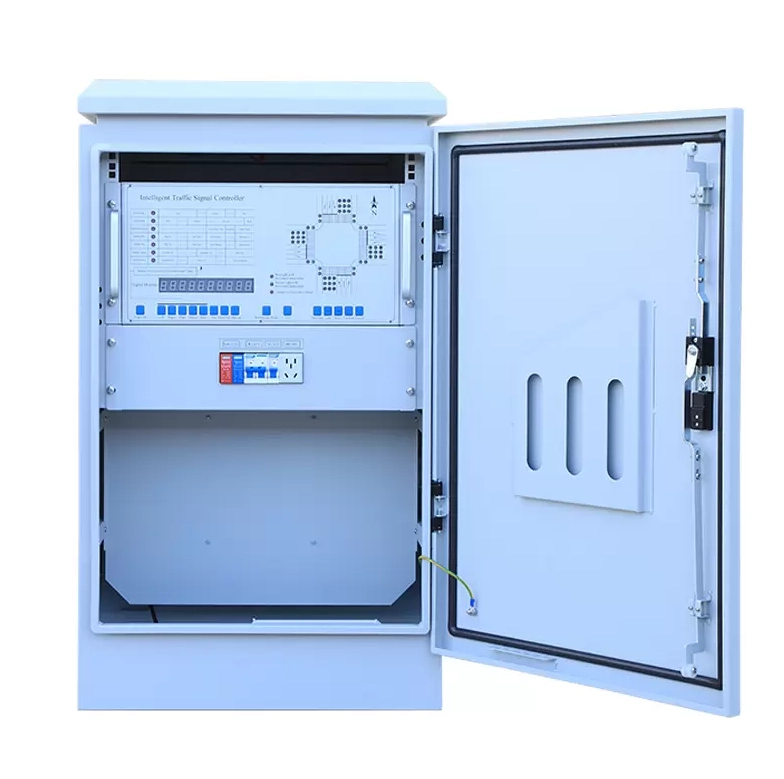Home > News > Industry News > Reliability Challenges and Maintenance Strategies for Single Point Traffic Signal Controllers
Reliability Challenges and Maintenance Strategies for Single Point Traffic Signal Controllers
Single Point Traffic Signal Controllers (SPTSCs) are a cornerstone of urban traffic management, controlling vehicular and pedestrian flow at intersections with precision. These controllers face multifaceted reliability challenges stemming from environmental conditions, electrical stress, mechanical wear, and software vulnerabilities. Any failure can compromise traffic safety, lead to congestion, and increase operational costs.
Yangzhou FAMA Intelligent Equipment Co., Ltd. (FAMA Traffic) provides state-of-the-art intelligent traffic solutions, including SPTSCs designed with high reliability, integrated diagnostics, user-friendly interfaces, and 5G-enabled connectivity. Their controllers are engineered to support efficient maintenance, rapid fault resolution, and predictive performance monitoring.
This article provides a full-spectrum, top-to-bottom analysis of reliability challenges in SPTSCs and outlines strategies to maximize operational uptime, safety, and efficiency.
1. Engineering and Design Foundations
1.1 Hardware Architecture
Industrial-Grade Microcontrollers (MCUs): Execute signal timing plans and interface with sensors. High-temperature and low-voltage-tolerant MCUs reduce the risk of unexpected resets.
Power Modules: Include surge protection, voltage stabilization, and battery backup to mitigate power-related failures.
Input/Output Relays: Control traffic lights, pedestrian signals, and auxiliary devices; designed to withstand hundreds of thousands of switching cycles.
Enclosure Design: IP66-rated enclosures prevent dust, moisture, and vibrations. Thermal management systems (heat sinks, fans) stabilize internal temperatures.
1.2 Software Architecture
Real-Time Operating System (RTOS): Ensures accurate timing execution, multitasking, and priority-based signal control.
Diagnostic and Failsafe Logic: Detects anomalies, logs events, and switches to safe states in case of failures.
Remote Parameter Adjustment: Supports plan modification, cycle tuning, and firmware updates remotely, reducing the need for on-site intervention.
Insight: Harmonized hardware-software design is the foundation of SPTSC reliability.
2. Environmental and Operational Stressors
2.1 Climatic Impacts
Temperature Extremes: High heat accelerates capacitor aging and solder joint fatigue, while sub-zero conditions reduce relay responsiveness.
Humidity and Condensation: Lead to PCB corrosion and connector degradation.
Solar Radiation: UV exposure deteriorates plastics and polymer housings, potentially compromising enclosure integrity.
2.2 Mechanical and Physical Stressors
Vibration and Shock: Traffic vibrations and accidental impacts can loosen connectors and damage mechanical relays.
Dust and Pollution: Obstruct cooling, reduce sensor accuracy, and accelerate wear on moving parts.
2.3 Electrical and Electromagnetic Stressors
Voltage Fluctuations: Brownouts or surges can corrupt memory or reset controllers unexpectedly.
Lightning Strikes and Transients: High-voltage events can cause catastrophic hardware failures without surge protection.
Electromagnetic Interference (EMI): Proximity to high-power equipment can induce errors in sensor readings or communication links.

3. Common Failure Mechanisms
Failure Type | Root Cause | Operational Impact |
Power Module Failure | Aging, surge, poor heat dissipation | Controller shutdown, signal inconsistencies |
Relay Wear | High switching cycles, vibration, corrosion | Stuck signals, delayed transitions |
Sensor Fault | Contamination, EMI, loose connections | Incorrect traffic detection, unsafe crossings |
Firmware Malfunction | Bugs, outdated versions, misconfiguration | Timing errors, inconsistent operations |
Environmental Degradation | UV, moisture, dust | PCB corrosion, housing damage, intermittent failures |
Observation: Reliability is multidimensional, requiring attention across hardware, software, environmental, and operational domains.
4. Preventive and Predictive Maintenance Strategies
4.1 Preventive Maintenance
Scheduled Inspections: Monthly visual checks and functional tests of enclosures, relays, connectors, and fans.
Component Replacement: Replace relays, fans, capacitors, and other wear-prone elements on a planned schedule.
Firmware Updates: Keep system software updated to correct known bugs and optimize signal timing.
4.2 Predictive Maintenance
Sensor-Based Monitoring: Track temperature, humidity, voltage, and relay cycles in real-time.
Data Analytics: Use historical fault data to predict failures before they occur.
Lifecycle Modeling: Estimate component lifespan using statistical and machine learning models.
FAMA Traffic Advantage: Their controllers feature real-time diagnostic reporting and remote alerts, enabling maintenance teams to intervene proactively and reduce unplanned downtime.
5. On-Site Maintenance Optimization
Integrated Multi-Functional Interface: Supports plan modification, cycle tuning, parameter adjustment, and manual control without specialized tools.
Rapid Diagnostics: Clear error codes, automated self-tests, and detailed logs enable quick fault identification.
Downtime Reduction: Streamlined interface minimizes intersection disruption and traffic delays.
Benefit: Efficient on-site maintenance ensures safety and operational continuity, critical in high-traffic urban intersections.
6. Smart and Networked Controller Enhancements
6.1 Remote Monitoring
Centralized platforms monitor multiple intersections in real-time.
Alerts for environmental anomalies, voltage fluctuations, and hardware faults.
Remote updates reduce labor costs and travel time for maintenance teams.
6.2 5G and IoT Integration
Enables adaptive traffic control using live traffic flow data.
Supports emergency vehicle priority, dynamic pedestrian timing, and integration with other smart city systems.
6.3 Data-Driven Reliability
Continuous logging allows trend analysis and predictive maintenance scheduling.
Improves decision-making for component replacement and lifecycle management.
Insight: Networked intelligence transforms SPTSCs from reactive devices into proactive, self-monitoring systems.
7. Lifecycle Management and Reliability Optimization
Robust Component Selection: Industrial-grade MCUs, relays, capacitors, and IP-rated enclosures.
Accelerated Testing: Thermal cycling, vibration, and EMI testing simulate extreme operational conditions.
Standardized Firmware and Hardware: Reduces variability and simplifies maintenance procedures.
Technician Training: Comprehensive training ensures rapid, consistent, and safe maintenance practices.
Outcome: Optimized lifecycle management maximizes reliability, minimizes total cost of ownership, and enhances traffic safety.
8. Maintenance Workflow Visualization
Flow Overview:
1. Inspection → 2. Diagnostics & Logging → 3. Predictive Analysis → 4. Component Replacement / Firmware Update → 5. Performance Verification → 6. Return to Service
Explanation: This systematic workflow ensures proactive maintenance at every stage, reducing both planned and unplanned downtime.

9. Frequently Asked Questions (FAQ)
Q1: How often should preventive maintenance be performed?
A: Monthly visual inspections, quarterly functional tests, and annual component lifecycle reviews are recommended.
Q2: Can SPTSCs operate reliably in extreme climates?
A: Yes, when equipped with industrial-grade components, IP-rated enclosures, and environmental sensors for adaptive management.
Q3: How does predictive maintenance improve reliability?
A: By using sensor data and historical trends, failures can be anticipated and prevented before causing operational issues.
Q4: What are the benefits of 5G integration?
A: Real-time traffic data analysis, adaptive signal control, remote monitoring, and faster fault response times.
Q5: How does FAMA Traffic optimize on-site maintenance?
A: Through integrated multi-functional interfaces, clear diagnostics, and user-friendly firmware, minimizing the need for specialized tools.
10. Conclusion
Single Point Traffic Signal Controllers are complex, multi-domain systems whose reliability is critical for urban traffic safety. Challenges arise from environmental stressors, electrical anomalies, mechanical wear, and software vulnerabilities. By adopting a full-spectrum approach—including robust design, preventive and predictive maintenance, networked monitoring, and 5G-enabled intelligence—cities can ensure high uptime, operational efficiency, and safe intersections.
FAMA Traffic delivers advanced SPTSCs that combine industrial-grade hardware, intelligent software, proactive diagnostics, and smart city integration, empowering traffic authorities to maximize reliability, minimize downtime, and optimize urban traffic flow. A strategic, data-driven maintenance program ensures these controllers continue to operate effectively in all conditions, providing long-term traffic safety and operational efficiency.
